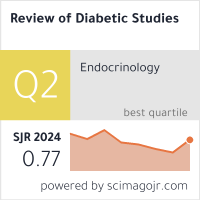Weight Regain After Bariatric Surgery In Taif Region
DOI:
https://doi.org/10.70082/0dsj2m83Abstract
Background: The objective of this study is to assess and evaluate weight regain in patients submitted to bariatric surgery over a 2-year follow-up period. And Identify modifiable behaviors associated with weight regain after bariatric surgery. Getting a clear definition for weight regain after bariatric surgery association with clinical outcomes.
Methodology: The study was a cross-sectional study that was conducted in the Taif region for a duration of one year. The data collection tool used in this study was an electronic questionnaire sent to the patients. The questionnaire was designed to collect information on patient demographics, type of surgery, dietary and lifestyle habits, medical conditions, and weight management outcomes.
Results: we included 53 patients who underwent bariatric surgery, with 36 (67.9%) being male, with mean age of the patients was 39.64 years. the rate of weight gain after surgery appears to be relatively high, with 23 (43.4%) patients gaining more than 10 Kg, 15 (28.3%) patients gaining between 5-10 Kg, and only 15 (28.3%) patients gaining less than 5 Kg. it was found that those who followed a diet with clinical dietitian after surgery had a higher percentage of gaining > 10 kg compared to those who did not follow such a diet.
Conclusion: Weight regain following bariatric surgery is a common issue that requires ongoing management to avoid recurrence. In addition to highlighting the value of regular follow-up with a clinical dietitian and nutritional management in weight maintenance following surgery, this study offers insights into the factors linked with weight rebound after surgery.
Downloads
Published
Issue
Section
License

This work is licensed under a Creative Commons Attribution-ShareAlike 4.0 International License.


